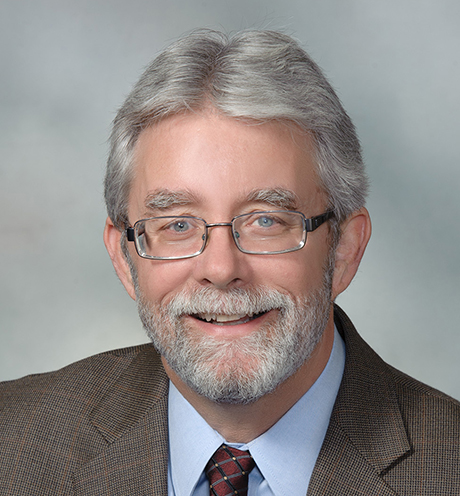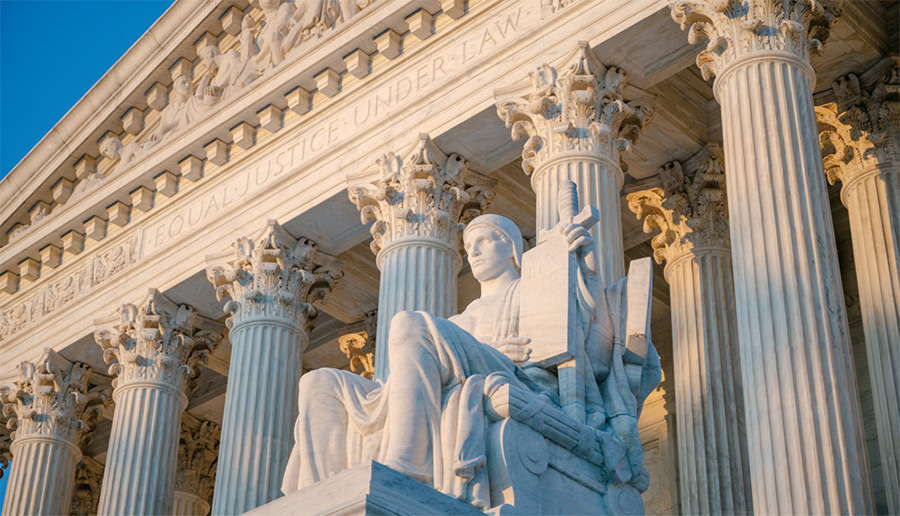
legal insights
Stepping by things decided
merica’s federal judiciary is presided over by the nine justices of the Supreme Court. Since 1935, the Court has been located across from the U.S. Capitol and its west steps lead to an entrance that faces the historic Capitol dome. It’s unfortunate that these majestic rows of marble steps, in reaction to recent decisions by the Roberts Court, have been fenced off for security reasons.
One of those cases, Kennedy v. Bremerton School District (2022) 142 S. Ct. 2407), is discussed in this magazine by two CSBA attorneys, Maryela Martinez and Dana Scott. They describe how the Court finally cast aside the “Lemon” test, which school boards have been relying upon for over 50 years to determine whether their actions could violate the First Amendment. Their insightful article analyzes how the Supreme Court, after decades of stops and starts, overturned the purpose, effect and entanglement “test” in Lemon v Kurtzman (1971) 91 S. Ct. 2105, and how the Court will instead rely on the historical traditions of our Founding Fathers to decide whether actions of a religious nature by those who govern, work or attend public schools will be lawful.

Maine is the most rural state in the nation and does not provide secondary education to over half of its students. For over 50 years, Maine has permitted parents living where public education is not available to choose what school, whether public or private, their children will attend. Maine would then pay “tuition” to the schools chosen by parents except for religious schools. In Carson, parents who wanted their children to attend religious schools challenged the prohibition as violating the Free Exercise Clause of the First Amendment. The Court agreed, holding that when a benefit like secondary education is provided, and an individual’s independent choice to obtain the benefit is “genuine and sincere,” the benefit must be available regardless of the religious character of a school. (Id., p. 1994.) Any such disqualification by the state based solely on the religious character of a school “effectively penalizes the free exercise of religion.” (Id., p. 1997, citing Zelman v Simmons-Harris (2002) 122 S. Ct. 2460.)
Minimizing the weight of prior decisions that would have supported Maine’s prohibition against directly funding religious instruction because it was consistent with the purposes of the Establishment Clause, Chief Justice Roberts wrote that paying the tuition of all students except for religious students “is discrimination against religion … [and] thus promotes stricter separation of church and state than the Federal Constitution requires.” (Id., 1997-1998.)
Carson was foreshadowed by the Court’s opinion issued two years ago, which held the “Establishment Clause is not offended when religious observers and organizations benefit from neutral programs” like those that allow the recipients of taxpayer-funded scholarships for private schools to independently choose to use this “public benefit” at religious schools. (Espinoza v. Montana Dept. of Revenue (2020) 140 S. Ct. 2246, 2254.) The Court in Espinoza stressed that it “has repeatedly upheld government programs that spend taxpayer funds on equal aid to religious observers and organizations, particularly when the link between government and religion is attenuated by private choices.” (Id., p 2261.)
In the late 1800s, Montana, like 36 other states, amended their constitution to bar any aid to schools “controlled by any church, sect or denomination.” (Id., p.2251.) Known as Blaine Amendments, they were named after James G. Blaine, the Republican Minority Leader from Maine, who failed in 1875 to amend the First Amendment to prohibit states from funding religious schools. The Court in Espinoza found such a prohibition could not withstand strict scrutiny when it discriminates against parents who choose to use the taxpayer-funded scholarships at religious schools. (Id., p. 2257.) Twenty years earlier, Justice Sandra Day O’Connor opined that strict scrutiny “effectuates the First Amendment’s command that religious liberty is an independent liberty, that it occupies a preferred position …” (EDD of Oregon v. Smith (1990) 110 S. Ct. 1595, 1609.) In Carson, the Court reaffirmed this principle stating, “[a law that targets religious conduct for distinctive treatment … will survive strict scrutiny only in rare cases.” (Carson, supra, p. 1997.)
The possible impact of Carson in California is uncertain. Like Montana, California in 1879 adopted a Blaine Amendment requiring that “no public money shall ever be appropriated for any sectarian or denominational school …” (CA Const. art. IX, § 8.) In 1974, state voters approved an amendment prohibiting school districts and other local agencies from using public funds to “support or sustain” religious organizations. (CA Const., art. XVI, § 5.) Given the direction of the Supreme Court, any effort by the Legislature or by voters to provide tuition or scholarships to parents who choose to use these public funds at religious schools could be found constitutional. It is not unforeseeable that the Court could support such an effort although California has upheld the religious school funding prohibitions in its constitution and has a public education system that is operated statewide in compliance with a host of antidiscrimination laws. (See CTA v. Wilson Riles (1981) 29 Cal. 3d. 794; Ed. Code §220; Gov’t Code § 11135;)
Another possible use of Carson and its progeny could be to challenge the nonsectarian affirmation pledge required of petitioners seeking to establish a charter school. (Ed. Code § 47605 (e) (1).) Although potential impacts are hard to predict, with the ages of the justices in the current majority on the Supreme Court ranging from 50 to 74, what is predictable is that religious expression in public schools will receive the double protection of the Free Exercise and Free Speech clauses for many years to come.
Keith Bray is CSBA general counsel and chief of staff.
Please note that the information provided here by CSBA is for informational purposes and is not legal advice. Please contact your district or county office of education’s legal counsel for legal questions related to this information.